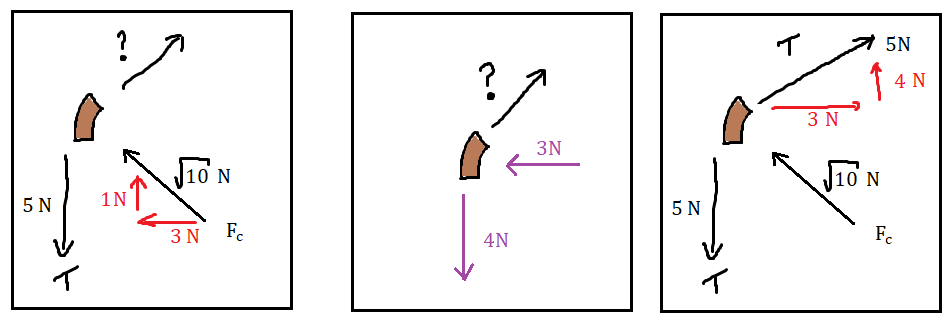I am trying to understand if the "internal forces" in a rope around a pulley is the same as the "internal forces" in the rope from a weight without a pulley.
I know the tension before and after the pulley is the same (assume massless rope and smooth pulley), very good demonstration here, but what about part incontact with the pulley?
Here is my diagram: (the force diagram is next to each experiment)
The first picture makes shows clearly that the internal forces, tension is $10N$ throughout the rope, but for the second picture, there are $3$ forces on it (the third, $F_c$ is the contact force from the pulley).
If the system is in equilibrium, then the tension matches the force pulling from the bottom.
We know the tension in the middle of the rope is also $5N$ as if we were to cut the rope in half, then in order to keep the system in equilibrium, the end needs to have $5N$ of tension in it.
But if we look at the next experiment of 2 angled wires supporting a weight:
Here even when the tension top right is $5N$, the resultant "tension" (not sure if this is the right word) is actually $5.83N$ inside the ring.
My question: shouldn't the forces in each of the rope segments around the pulley be similar to that of the ring, where its slightly higher than the tension (or the force required to make the tension) at the end?



